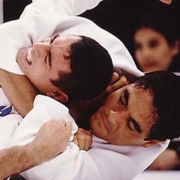On teaching submission defence
The goal of BJJ is to submit your opponent. The counterpoint of that is to not get submitted yourself. How do I go about teaching submission defence?
Surprisingly, I don’t teach submission defence in class.
There are only a small number of contact hours with athletes each week. We must focus on the areas that make the biggest and most immediate gains to most efficiently use our time. Teaching submission defence cuts into time that could be used for more important things.
Does this mean that our grapplers are lacking knowledge of submission defence? Not at all. Consider when a grappler is away from the gym. Is this just dead time or can it be utilised?
Say a grappler gets caught in a submission but knows how to defend and escape. The roll with continue and s/he will quickly forget that a mistake was made that lead to being caught in the submission.
Another grappler gets caught in a submission but doesn’t know how to defend and so must tap. When away from the gym, this person will remember being forced to tap. S/he will think about how the submission happened, and try to come up with ways to avoid being caught again.
The grappler is now utilising the dead time when not at the gym, and is developing the most important skill in grappling – predicting what is about to happen next.
Does this mean I never teach submission defence? No. However, submission defence is only taught one-on-one. When a grappler is being caught repeatedly and has not been able to discover a defence, that is the time to give some hints.
A coach’s job is to develop highly skilled, self sufficient grapplers. This means setting up situations where the athletes wants to take control of their own training. Not teaching classes on submission defence is one way we achieve this.





Leave a Reply
Want to join the discussion?Feel free to contribute!